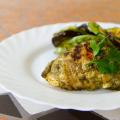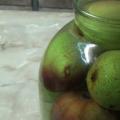On International Mother Language Day, Kurds talk about the importance of the Kurdish language. Official languages of Iraq What about Turkish Kurdistan
KURDISH LANGUAGE, the language of the Kurds. The official language of Iraqi Kurdistan. Distributed in Kurdistan, in the republics of the former USSR (mainly in Armenia, Georgia, as well as in Kyrgyzstan, Kazakhstan, etc.), in Afghanistan and Pakistan. The total number of speakers is over 35 million people (2008, estimate), including in Turkey about 20 million people, Iraq about 6 million people, Iran about 7 million people, Syria about 1 million people, in Russia 36.5 thousand people (2002 , census).
Kurdish is one of the Iranian languages (northwestern group). It is a collection of dialects. In Russian Iranian studies there are 2 main groups. The northern (the most widespread; area - mainly Turkish Kurdistan, partly Syria, Iraq, Iran, Transcaucasia, Russia) includes the dialects of the Kurmanji and Zaza dialects (Zazaki, Dymli). Southern (Iran, Iraq) includes two subgroups of the largest dialects [Sorani, Suleimani, Mukri, Sonei (conventionally united by the linguonym “Sorani”); Gorani, Avramani, Kandulai, Badjalani (united by the term “Gorani”)], as well as insufficiently studied dialects of Kermanshahi, Luri, Fayli, Laki, etc. In Iranian studies, there is a point of view according to which 3 Kurdish languages are distinguished within the Iranian languages [northern (Kurmanji), central (Sorani) and southern (Kelkhuri; includes the listed under-researched dialects)], and Zaza and Gorani, whose speakers are also considered Kurdish, are classified as separate subgroups of northwestern Iranian languages.
The described dialect division is based on a set of phonetic, grammatical and lexical features that characterize each of the groups. Most characteristic features Kurmanji, which distinguishes it from Sorani, relate to the field of phonetics: the presence of aspirated p’, t’, k’, pharyngealized affricate c’, labiodental fricative v (in Sorani it corresponds to the labiolabial round fricative w); the absence of velarized l, as well as the Sorani-specific diphthongoids ua, uê, uî. In morphology, this is: the presence of indicators of the indirect case of the name, differentiated by gender and number [in Sorani there are no cases, in it the plural of the name has a general form of -an, while in Kurmanji the suffix -a(n) serves only as an indicator of the indirect case plural]; opposition by gender and number of izafet forms [in Sorani izafet has a general form of -l(у)]; absence of the suffixal indicator of definiteness -eke (widely used in Sorani); in the verb system - the presence of an objective conjugation of a transitive verb in past tense forms (in contrast to the subject in Sorani), as well as an analytical form of the passive (in contrast to the simple form in Sorani). One of the main features that distinguishes Sorani from Kurmanji is the use in Sorani of multifunctional personal enclitic pronouns (see Clitics), which permeate the grammatical structure of all southern dialects: they act as personal indicators of transitive verbs in the past tense, are part of complex prepositional complexes, widely are used in object-attribute functions, as well as in the construction of various syntactic constructions.
The main Kurdish dialects (Kurmanji, Zaza, Gorani, Avramani, Sorani, Sulaimani, etc.) have significant literature, including artistic, religious, historiographical works [the first written monument in the Kurdish language (in Kurmanji) dates back to the 11th century]. However, only Kurmanji (a literary form formed on the basis of the Hakkari dialect), Gorani (a literary form based on Avramani, used until the mid-19th century) and Sorani (a literary form based on Suleimani) had the status of a literary language. Contemporary literature develops most actively in Kurmanji and Sorani.
In Turkish Kurdistan, writing is based on the Latin alphabet, in Iran and Iraq - the Arabic-Persian alphabet, in Syria - alphabets based on Arabic and Latin graphical basis (all from the mid-20th century). Writing in former USSR(mainly in Armenia and Georgia) since 1921 based on the Armenian, since 1929 - Latin, since 1945 - Cyrillic alphabet.
Lit.: Sokolova V. S. Essays on the phonetics of Iranian languages. M.; L., 1953. T. 1; Kurdoev K.K. Grammar of the Kurdish language (Kurmanji). M.; L., 1957; MacKenzie D. N. Kurdish dialect studies. L., 1961-1962. Vol. 1-2; Tsukerman I. I. Essays on Kurdish grammar. M., 1962; Eyubi K. R., Smirnova I. A. Kurdish dialect Mukri. L., 1968; Bakaev Ch. Kh. Language of the Kurds of the USSR. M., 1973; Tsabolov R.L. Essay on the historical morphology of the Kurdish language. M., 1978; aka. Kurdish language // Fundamentals of Iranian linguistics. New Iranian languages. M., 1997. Part 2; Yusupova Z. A. Suleymani dialect of the Kurdish language. M., 1985; she is the same. Kurdish dialect of Gorani. St. Petersburg, 1998; she is the same. Kurdish dialect Avramani. St. Petersburg, 2000; Pireyko L. A. Gorani. Zaza // Fundamentals of Iranian linguistics. New Iranian languages: northwestern group. M., 1997. Part 2; Smirnova I. A., Eyubi K. R. Kurdish dialect of Zaza (Dersim). St. Petersburg, 1998; they are the same. Historical and dialectological grammar of the Kurdish language. St. Petersburg, 1999; they are the same. Kurdish dialect Sonei. St. Petersburg, 2001; Todd T. L. A Grammar of Dimili also known as zaza. 2nd ed. Stockh., 2002.
Dictionaries: Bakaev Ch. Kh. Kurdish-Russian dictionary. M., 1957; Farizov I. O. Russian-Kurdish dictionary. M., 1957; Kurdoev K.K. Kurdish-Russian dictionary. M., 1960; Khamoyan M. U. Kurdish-Russian phrasebook. Er., 1979; Kurdoev K.K., Yusupova Z.A. Kurdish-Russian dictionary (sorani). M., 1983.
In this regard, we remembered countries where they do not speak “their own languages.”
From history:
Official language- a language that has a privileged status in the state or international organization. In relation to official language states often used term state language.
Switzerland – German, French, Italian, Romance languages
The languages of Switzerland, recognized by law as official and used by the majority of the country's population, are represented by German (63.7%), French (20.4%), Italian (6.5%) and Romansh (0.5%). Spoken speech is dominated by local variants based on Alemannic dialects German language and Franco-Provençal Patois. The presence of four legally recognized languages does not mean that every Swiss must know and speak them all: in most cases one or two languages are used.
At the same time, Swiss exists as an unofficial language, which is more often called the Swiss dialect.
Canada - English, French languages
English and French are recognized as "official" languages by the Canadian Constitution. This means that all laws at the federal level must be passed in both English and French, and what services federal bodies must be available in both languages.
The five most common non-official languages are Chinese (home language of 2.6% of Canadians), Punjabi (0.8%), Spanish (0.7%), Italian (0.6%) and Ukrainian (0). .5%). Indigenous languages, many of which are unique to Canada, are now spoken by less than one percent of the population and their use is generally declining.
Australia - no official language
The most widely spoken language in Australia is Australian. English language. The number of speakers is 15.5 million. The next most common languages in Australia are Italian (317 thousand), Greek (252 thousand), Cantonese (245 thousand), Arabic (244 thousand), Mandarin (220 thousand), Vietnamese (195 thousand) and Spanish (98 thousand).
There are also 390 Australian Aboriginal languages. The indigenous population is the Australian Aborigines, who speak Australian languages, which are divided into a large number of language families and groups. The largest language is the “language of the Western Desert” (more than 7,000 speakers), divided into many dialects. The largest language family- Pama-nyunga, occupying 7/8 of the continent.
list of countries where Spanish is spoken
- Europe: Spain
Americas: Mexico, Honduras, Nicaragua, El Salvador, Costa Rica, Panama, Cuba, Trinidad and Tobago, Dominican Republic, Venezuela, Colombia, Ecuador, Peru, Bolivia, Paraguay, Chile, Argentina, Uruguay
Asia: Philippines
Africa: Equatorial Guinea
- Spain, Argentina, Mexico and several other Latin American
- All Latin America (Peru, Bolivia, Brazil, Honduras, Trinidad, Chile, etc.) + Cuba + Spain
- of Spain.svg Spain
Argentina
Flag of Bolivia (state).svg Bolivia
Flag of Venezuela (state).svg Venezuela
Flag of Guatemala.svg Guatemala
Flag of Honduras.svg Honduras
Flag of the Dominican Republic.svg Dominican Republic
Flag of Colombia.svg Colombia
Flag of Costa Rica (state).svg Costa Rica
Flag of Cuba.svg Cuba
Flag of Nicaragua.svg Nicaragua
Flag of Panama.svg Panama
Flag of Paraguay.svg Paraguay
Flag of Peru (state).svg Peru
Flag of El Salvador.svg El Salvador
Flag of Uruguay.svg Uruguay
Flag of Chile.svg Chile
Flag of Ecuador.svg Ecuador
Flag of Equatorial Guinea.svg Equatorial Guinea
Regional or local official language:
Flag of the Philippines.svg Philippines
Flag of the Sahrawi Arab Democratic Republic.svg Sahrawi Arab Democratic Republic
Flag of the United States.svg USA
Flag of New Mexico.svg New Mexico
Flag of Puerto Rico.svg Puerto Rico
Organizations:
Flag of Europe.svg European Union
Flag of the United Nations.svg UN
OAS
Regulatory organization:
Association of Spanish Language Academies under the leadership of the Royal Spanish Academy
Total number of speakers:
400 million (450500 million including people who speak Spanish as a second language)
Rating:
5
Classification
Indo-European family
Roman group
Ibero-Roman subgroup
Writing:
Latin
Language codes
GOST 7.7597:
isp 230
ISO 639-1:
es
ISO 639-2:
spa
ISO 639-3:
spa
See also: Project: LinguisticsCountries and regions where Spanish is official
Spanish or Castilian (Spanish: espaol, castellano) is a pluricentric Ibero-Romance language that originated in the medieval kingdom of Castile, which included the modern territory of the province of Burgos and the autonomous regions of La Rioja and Cantabria, and widely in other regions of the world (primarily in South and Central America) during the Age of Discovery. Refers to Indo-European family languages (Romance group, Ibero-Romance subgroup). Writing based on the Latin alphabet. It is the second most widely spoken native language in the world (after Chinese) with 470 million speakers1 and the most widely spoken Romance language. According to various estimates, up to 548 million people around the world can speak Spanish 23 (including those people for whom Spanish is a second language and those who study it as a foreign language 20 million people). The largest Spanish-speaking country in the world by population is Mexico (over 120 million inhabitants), followed by Argentina. 9/10 native Spanish speakers currently live in the Western Hemisphere.Remove content
1Geographical distribution
1.1Standardization
1.2Dialects and linguistic variants of Spanish
1.3 Derived languages
1.4Spanish or Castilian?
2Anthroponymy
3History
4Spelling
4.1 Reading rules
4.1.1 Basic rules
4.2Stress in Spanish
4.3 Practical transcription into Russian
5Linguistic characteristics
5.1 Phonetics and phonology
5.1.1Vowels
5.1.2 Consonants
5.2Morphology
5.2.1 Article
5.2.2 Noun
5.2.3Adjective
5.2.4 Adverb
5.2.5 Numerals
5.2.6 Pronoun
5.2.6.1 Personal pronouns
5.2.6.2 Negative pronouns
5.2.6.3 Interrogative pronouns
5.2.7 Verb
5.2.8 Functional parts of speech
5.2.8.1 Preposition
5.2.8.2 Union
5.3Vocabulary
5.4Syntax
6Spanish in the world
7See Also
8Notes
9Literature
10Links - All countries South America(except Brazil - Portuguese)
- Paraguay forgot!!!:))))
- Spanish has official status in the following countries and territories: Argentina, Bolivia, Venezuela, Guatemala, Honduras, Dominican Republic, European Union, Western Sahara, Spain, Colombia, Costa Rica, Cuba, Mexico, Nicaragua, New Mexico (USA) ) (along with English), Panama, Paraguay, Peru, Puerto Rico (USA), El Salvador, Uruguay, Chile, Ecuador, Equatorial Guinea.
In addition, Spanish is widely used in Andorra (10 to 25% of the population) and Belize (60%), Aruba (85%) and Curacao (65%). It is also spoken in Bonaire (35%), Brazil, Trinidad and Tobago, Western Sahara, the Philippines and in Sephardi (Spanish-speaking Jewish) communities in Morocco, Serbia and Montenegro, Turkey and Israel.
“There is no bitterer tongue and no sweeter tongue,” says a Kurdish proverb. What are they, Kurdish languages - one of the most popular languages of the East?
What is the language of the Kurds?
Kurdish languages belong to the Iranian group. Originated from Median, but in the Middle Ages they were influenced by Arabic, Persian, and later B. at the moment Kurdish is spoken by about 20 million people. But there are significant differences between them, since they speak different dialects and use different alphabets.
This is explained by the fact that the Kurds live in territories belonging to different countries. In Iran and used in Turkey, Syria and Azerbaijan - and in Armenia - Armenian (until 1946) and Cyrillic (since 1946). The Kurdish language is divided into 4 dialects - Sorani, Kurmanji, Zazai (Dumili) and Gurani.

Where are Kurdish languages spoken?
The Kurdish language is most widespread in Turkey, Iran, Iraq, Syria, Azerbaijan, Jordan and Armenia. 60% of Kurds live in Turkey, Northwestern Iran, northern Iraq and Syria (Northwestern, Western, Southwestern and Central Kurdistan), speak and write in the Kurmanji dialect. About 30% of the Kurdish population live in Western and Southeastern Iran, Eastern and Southeastern Iraq (Southern and South-East Kurdistan) use the Sorani dialect. The rest use the Zazai (Dumili) and Gurani (South Kurdish) dialects.

Kurdish language: basics
For those who want to quickly learn the Kurdish language, Kurdish for beginners is suitable, which includes the most basic phrases in Kurmanji, Sorani and Southern Kurdish.
Dem bashi/Silav/Silam - Hello.
Choni?/Tu bashi?/Hasid? - How are you?
Chakim/Bashim/Hasim - Excellent.
Supas/Sipas/Sipas - Thank you.
Tkae/Tika wild/To hwa - Please.
Khva legeli/Mal ava/Binishte khvash - Goodbye.
Min tom hosh davet - I love you.
So minit hosh davet? - Do you love me?
Vere bo ere/Vere - Come here/come here.
Bo que erroy - Where are you going?
To chi dekey?/To heriki chit? - What are you doing?
Echim bo ser kar - I'm going to work.
Kei degerrieteve?/Kej deyteve? - When will you be back?
Herikim demeve; Eve Khatmeve/Ez Zivrim/Le Pisa Tiemesh - I'm coming back.
Kari to karek dikey? - What do you do for a living?
Min Errom / Min Deve Birrom - I'm going to...
Min bashim/ez bashim - I'm fine.
Min bash nim / ez neye bashim / me khves niyim - I’m not all right / - I’m not in the mood.
Min nekhoshim - I feel bad.
Chi ye/ewe chiye/eve ches? - What is this?
Hich/Chine/Huch - Nothing.
Birit ekem/min birya te kriye/hyurit kirdime - I miss you.
Deiteve; degereiteve/tu ye bi zirvi/tiyedev; gerredev? - Will you come back?
Nayemewe; nagerremeve/ez na zivrim/nyetiyemev; Nyegerremev - I will not return.
When communicating in an unfamiliar language, do not forget about sign language, which is practically the same throughout the world, with the exception of some. They can be clarified before traveling to a country where you will communicate with the Kurds.
Navi min... uh - My name is...
Yek/du/se/chuvar/pench/shesh/heft/hesht/no/de/yazde/dvazde/sezde/charde/panzde/shanzde/khevde/hezhde/nozde/bist - one/two/three/four/five/ six/seven/eight/nine/ten/eleven/twelve/thirteen/fourteen/fifteen/sixteen/seventeen/eighteen/nineteen/twenty.
Duchemme/duchembe/ducheme - Monday.
Sheshemme/sheshemb/shesheme - Tuesday.
Chuvarshemme/charshemb/chvarsheme - Wednesday.
Pencheshemme/penchshem/penchsheme - Thursday.
Jumkha/heini/jume - Friday.
Shemme/shemi/sheme - Saturday.
Yekshemme/ekshembi/yeksheme - Sunday.
Zistan/zivistan/zimsan - Winter.
Behar/bihar/vehar - Spring.
Havin/havin/tavsan - Summer.
Payez/payyz/payykh - Autumn.

Resources for learning Kurdish
The best way to learn Kurdish languages is through constant practice, and best view practitioners - this can be either a teacher or ordinary people for whom Kurdish is native.
You can find such people in groups in social networks dedicated to the Kurdish language and culture. Usually there you can find video lessons for beginners, a dictionary and a phrasebook, look at pictures with inscriptions in Kurdish, read poems in the original and, if something is not clear, ask native speakers.
If you want to get to know the Kurdish culture better, you can also find groups dedicated to Kurdish music and cuisine.

If it is not possible to communicate with a native speaker, then you can find courses for self-learning the Kurdish language.
 Chicken kebab marinated with lemons and mineral water
Chicken kebab marinated with lemons and mineral water Step-by-step recipe for making Mediterranean seafood soup
Step-by-step recipe for making Mediterranean seafood soup Pear compote without sterilization for the winter Pear compote is very tasty
Pear compote without sterilization for the winter Pear compote is very tasty